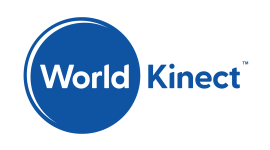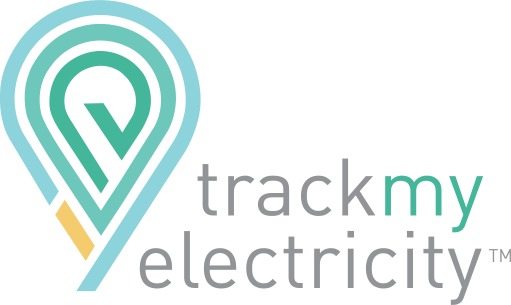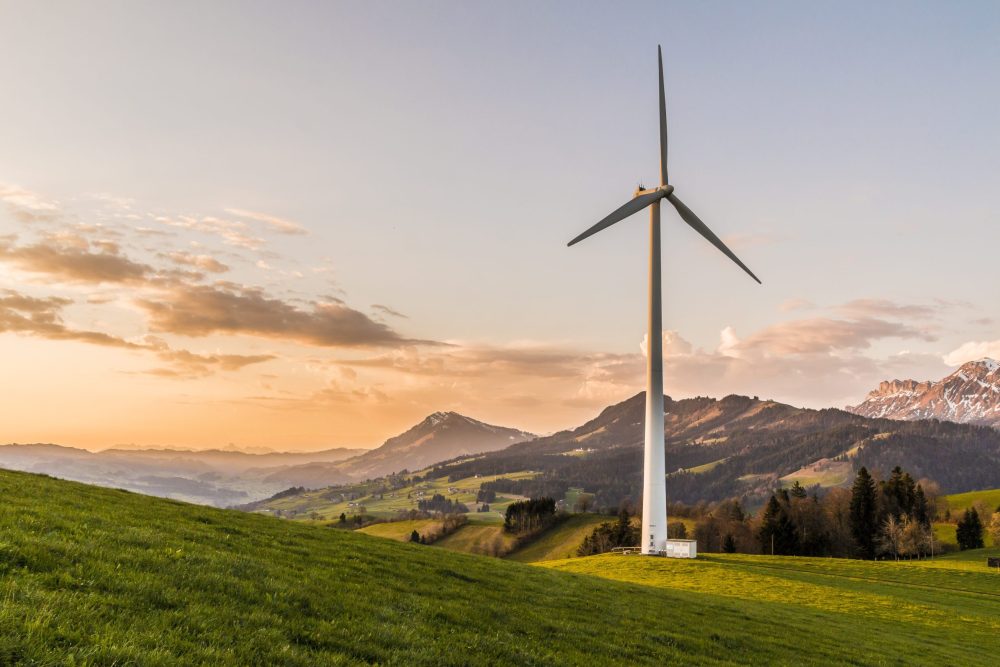EUROPEAN MARKET BOUNDARY CRITERIA
Claims of renewable electricity use are only valid if the generation and consumption of said electricity occur in the same electricity market. The redefining of European market boundaries is thus highly significant for companies sourcing renewable electricity.
According to the updated technical criteria, a country belongs to the European single market for electricity if it meets the following three conditions:
- It is in the EU single market
- It is a member of the Association of Issuing Bodies (AIB)
- It has a grid connection to at least one other country that meets the above conditions
Exceptions are made for jurisdictions that have very little domestic electricity production and import most of their electricity from countries that meet the updated criteria. This includes the Channel Islands, Andorra, Liechtenstein, Monaco, San Marino, and Vatican City. The list of countries and areas that currently meet these new criteria are:
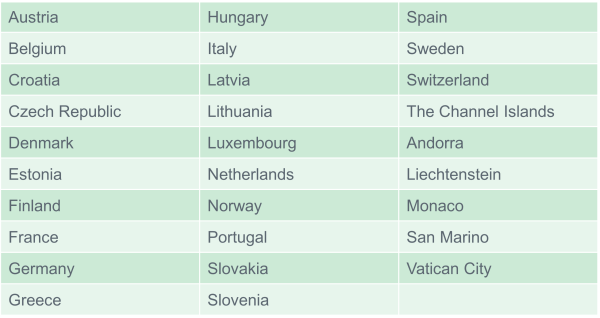
All European countries that neither fit the new criteria nor are exempt now represent individual markets for renewable electricity.
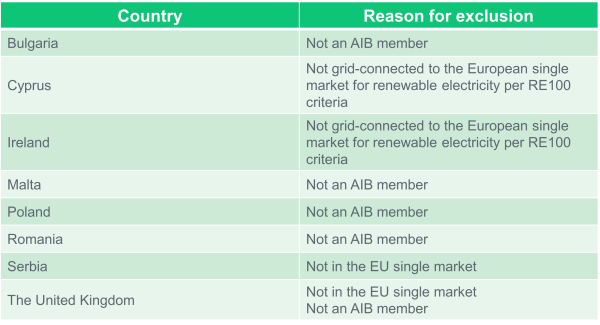
By this new definition of market boundaries, over 600 GWh of electricity sourced by 46 different RE100 members across 24 countries in 2022 would no longer be eligible to count towards RE100 goals.
This update applies to contracts with operational commencement dates after 1 January 2024.
15-YEAR LIMIT ON COMMISSIONING AND REPOWERING DATES
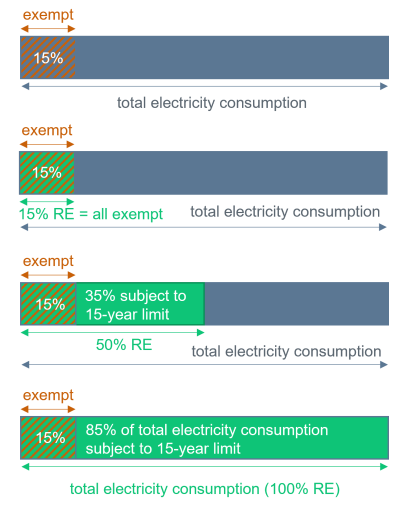
The second major change to the existing RE100 technical criteria is the 15-year limit on commissioning and repowering dates of renewable electricity power plants. This does not apply to self-generated electricity or to electricity sourced from on-site PPAs or PPAs with a direct line connection.
Furthermore, up to 15% of an entity’s total electricity consumption is exempt from this rule.
As RE100 details in the December 2022 version of its Technical Criteria, if a corporate buyer sources only 15% of its total electricity consumption from renewable electricity, no portion of this renewable electricity procurement is subject to a commissioning or repowering date limit.
A corporate buyer procuring, for example, 50% renewable electricity may exempt 15% (of its total consumption) and must subject the remainder of its procurement of renewable electricity (i.e. 35% of its total consumption) to this new requirement.
A corporate buyer procuring 100% renewable electricity may exempt 15% of its procurement and must subject the remaining 85% of its procurement to this new requirement.
This update applies to contracts with operational commencement dates after 1 January 2024.
SUSTAINABLY SOURCED HYDROPOWER
In addition to these changes, RE100 has clarified existing guidance concerning accepted sources of renewable energy and specified that hydropower should be sourced “sustainably” to be eligible to count towards RE100 goals. RE100 recommends that this be qualified through third-party verification, including (but not limited to) the Green-e® Renewable Energy Standard and the Hydropower Sustainability Council’s Hydropower Sustainability Standard.
Per RE100, the intention behind introducing stricter sourcing criteria for RE100 members is to raise the standard of claims of renewable electricity. In addition, these updates drive grid transformation, which in turn “lower[s] barriers to voluntary procurement of renewable electricity”.
Sources:
RE100, RE100 Technical Criteria. 12 December 2022. Dec 12 – RE100 technical criteria + appendices.pdf (there100.org)
RE100, Results of public consultation on proposed changes to the RE100 technical criteria. October 2022. 20221024_RE100 consultation response.pdf (there100.org)
Glumac, Andrew and Mike Peirce, “RE100 updates its technical criteria to accelerate corporate impact.” RE100, 24 October 2022. RE100 updates its technical criteria to accelerate corporate impact | RE100 (there100.org)
For more information on the RE100 initiative, click here.
If you have any questions about sourcing energy attribute certificates, please email GlobalREC@world-kinect.com.
